This article is part 2 of ‘Learning To Recognize Triads’ – make sure you’ve read Part 1 first! You should make sure you are quite comfortable with major and minor triads before moving onto the material below.
Diminished Triads
The next triad to work with is the diminished triad. It has a minor third and diminished fifth above the root. The distance from the third to the fifth is also a minor third:

C Diminished Triad
The diminished triad naturally occurs on the seventh scale degree of a major scale. If you are using solfege the syllables are: ti re fa. Here are a few examples to get you going – as before, listen to the triad and sing it back. Then try singing a diminished triad given a starting pitch from your instrument:

Four Diminished Triads – ti re fa
You may find it helpful to compare diminished triad to a minor one. For example, sing a minor triad, then flatten the fifth:
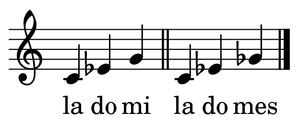
Minor/Diminished Comparison
Augmented Triads
Our final triad is the augmented one. It consists of a major third and augmented fifth above the root. The distance from the third to the fifth is a major third:
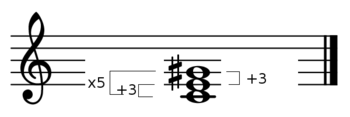
C Augmented Triad
The augmented triad is the mediant chord in harmonic minor scales. Nevertheless it is probably simpler to produce and recognize if we think of it as a major triad with a raised fifth. The solfege would be do mi si. Try singing a major triad first, then by raising the fifth by a semitone, sing the augmented triad:
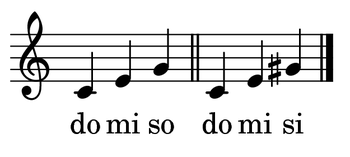
Major/Augmented Comparison
This next example gives you four augmented triads to practice with:

Four Augmented Triads – do mi si
Beyond basic triads
Now that we have covered the basic triad types you may want to take some time to review and study. This example contains all four triad types in block chords in no particular order. Try to identify the quality of each chord.
Up until now, we have been working with triads in ‘closed position’, that is the chord’s pitches are voiced as closely together as possible. In music, however, chords are often ‘opened voiced’ with one or two of the chord’s members doubled. For example, in standard four-part writing, usually the root of the chord is doubled, and there can be quite a large distance between the bass voice (the lowest pitch) and the soprano (the highest one). What we would like to be able to do is to reduce the chord in our mind to the basic triad to determine its quality.
Take for example a C major triad. The following example is a common four-part voicing to this chord. Listen to the chord and then try to see if you can sing its root, third and fifth:
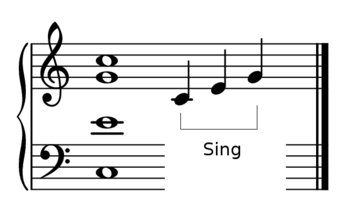
C Major Triad – Open Voicing
The following example presents one of each kind of triad in a four-part texture for your practice. First try to hear its quality, then try to sing the chord from the root through the fifth:
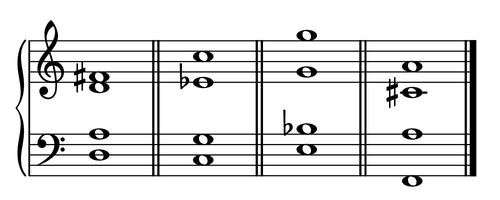
Four Triads – Open Voicing
Once again we have covered quite a bit of material in a short article. Take your time to practice the various types of triad with these tracks and your own instrument. In the next article we will take a look at seventh chords. You will need a clear understanding of major and minor triads to work with these types of chords.
If you find this lesson difficult, go back to the previous article (Part 1) and try introducing these extra exercises gradually. If you have any questions, please leave a comment below or come ask in our forums.

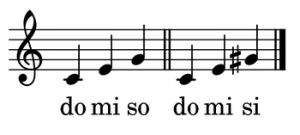







Drop 2 or drop the alto part an octave always helps to clearify the sound of the harmony for me, when it becomes an open voicing.